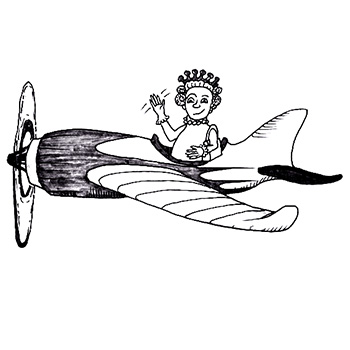
Related Questions
- Can helicopters fly upside down?
- Can I make my car fly?
- Why don’t spacecraft burn up or veer off course during reentry from space?
- Will cars ever be able to drive themselves?
- How does a jet engine work?
- Can a honeybee cause a sonic boom if it travels fast enough?
- How does an aircraft steer while taxiing on a runway?
- Why hasn’t commercial air travel gotten any faster since the 1960s?
- Is there a way to detect my car’s keyless remote if I don’t know where it is?
- Would it be feasible to dump nuclear waste on the Moon?
Is it possible to make solar-powered airplanes?
Yes it is. But maybe don’t pack your bags yet. Actually, maybe forget the luggage altogether.
By Carolyn BlaisBelieve it or not, the sun has actually been powering aircraft in sustained flight since the 1980s, says Tony Tao, a PhD student in Aeronautics and Astronautics at MIT. Tao explains that NASA and its subcontractors have been at the forefront of progress for solar-powered aircrafts, having built the Pathfinder, Centurion and most recently, Helios. All three aircrafts are remotely piloted, use batteries and fuel cells to store power for nighttime flying, and are “all-wing” in design.
In 2016, Facebook swooped in on the action with Aquila, a solar-powered plane designed to bring Internet connectivity (to use Facebook itself, no doubt) to areas otherwise bereft.
Many of these aircraft have wingspans as wide as the 737 passenger jets. But the similarities between solar-powered aircraft and the commercial passenger jets we’re all familiar with, end right about there.
Tao, who researches rocket and drone development, aircraft systems, design and optimization, and is a test pilot for many AeroAstro projects, admits that solar-powered planes present some “engineering challenges.” First, he says, both the sun and the plane are constantly moving in the sky, so the angle of capture for the sun to hit the panels is highly variable. Because of this, the solar panels do not capture as much energy as they could if they were, say, on a roof.
Another problem with solar-powered flight is harnessing enough energy for speed. “There is a cubic relationship between speed and how much power is needed to move an object through the air,” Tao explains. Photons captured in the solar cells are converted into electrical potential that powers electric motors in the plane, but solar-powered planes today are only capturing about 10 or 20 percent of the energy from the sun. That equates to a speed of only 50 miles per hour.
Commercial passenger jets, on the other hand, travel at about 600 miles per hour. Tao suggests that even if we had the technology to harness 100 percent of the energy from the sun to power a plane, top speeds would still only be about 100 miles per hour. “The power-to-speed relation means that solar power ends up being a not very good solution if you want to get people somewhere quickly,” Tao says.
Unfortunately, solar-powered planes face even more bumps—both literally and figuratively. Because these types of planes are built with enormous wingspans and delicate, lightweight solar cells (some are as thin as a piece of hair), they are more vulnerable to adverse weather conditions.
However, a major positive of solar-powered planes, Tao notes, is that, “unlike jets, solar aircrafts don’t have to carry fuel, and aren’t combusting oxygen, so they can fly at much higher altitudes.” Which is particularly important because solar-powered planes need to fly higher than the clouds to avoid being in their shadow.
Overall, Tao explains, solar-powered aircraft are probably better suited for things like loitering over one area, collecting data for climate research, or conducting surveillance with cameras, than for moving people around. After all, “delicate” and “slow” are adjectives that probably won’t sell a lot of seats on commercial passenger flights.
One person who is not deterred from flying on solar-powered flights is Captain Piccard, and no, we don’t mean the Star Trek Next Generation one. Bertrand Piccard, a Swiss adrenalin seeker, and his buddy Andre Borschberg, took turns piloting the Solar Impulse—the first solar-powered plane to make a trip around the globe. The journey took a full (though non-continuous) year, and wasn’t exactly first class flying, but Tao admits that this trip was still a huge win for non-fuel powered aircraft.
Since the sun won’t ever give off more energy than it already does, it seems solar-powered planes are unlikely to ever be fast enough to viably carry hundreds of people one day. However, Tao reasons that solar flight can improve as better battery technology is developed, which will allow solar-powered planes to remain in flight longer, particularly at night, after that big yellow orb in the sky that powers all life, has set.
Thanks to Sophie Hammerl, Age 16 from Zurich, Switzerland for the question.